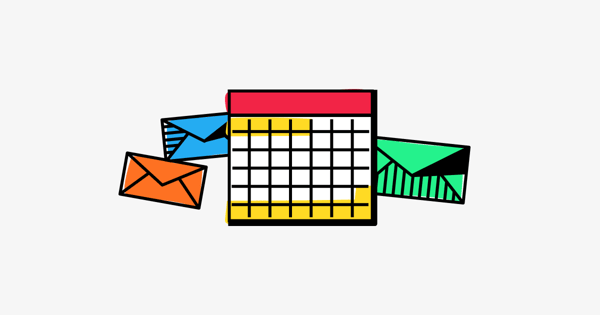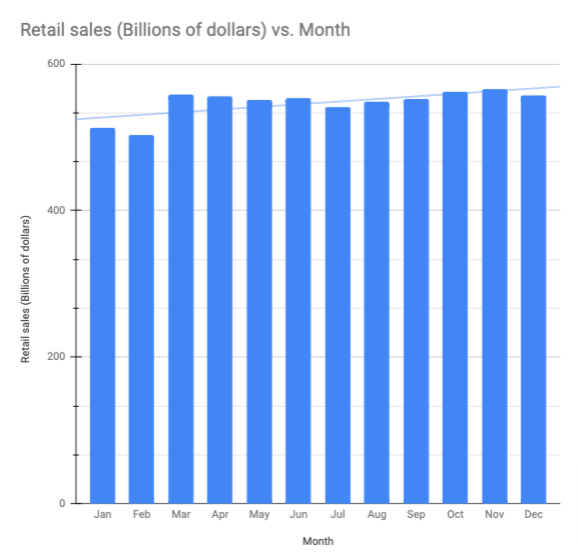January has traditionally been a tough time for retailers, with consumers tightening the purse strings after splashing out during the ecommerce holiday season.
In fact, in 2021, January saw the second-lowest retail sales total of any month—just ahead of February:
As a marketer, what can you do to avoid starting the year with two months of pain?
In theory, it’s a simple solution: you just need to nail your messaging. However, as we all know, that’s easier said than done.
To make your life a little easier, I dipped into the Drip archives to unearth five of the very best 2023 New Year’s marketing ideas from some of our favorite brands.
1. Origins: Tap Into Popular New Year’s Resolutions
I’m going to start with arguably the most effective of all New Year marketing ideas: referencing your customers’ New Year’s resolutions.
A YouGov survey conducted in late 2022 revealed that 37 percent of Americans planned to set a goal or resolution for the following year, while 17 percent were unsure.
In other words, up to 54 percent of consumers started 2023 with some sort of personal objective. That’s far too big a chunk of your audience to ignore.
The first step to leveraging resolutions in your New Year marketing is to understand the types of goals your customers are setting.
Fortunately, there’s plenty of research to help us out. According to Statista’s Global Consumer Survey, health is a common focus, relating to each of the three most popular resolutions for Americans:
- Exercise more (cited by 52 percent of respondents)
- Eat healthier (50 percent)
- Lose weight (40 percent)
Those resolutions prove that health touches on multiple consumer product categories. Want to exercise more? Here, buy these running shoes. Planning to eat a healthier diet? Check out this cookbook. Eager to lose weight? You’ll need a new water bottle for all those gym sessions.
And, as cosmetics brand Origins demonstrates, there’s also a clear link between health and skincare products.
In my first New Year marketing example, Origins kicks things off with a subject line that reads like a personal mantra:
![]() That’s basically a ready-made resolution, so it’s a fantastic inspiration for anyone who’s yet to decide their goals for the year ahead.
That’s basically a ready-made resolution, so it’s a fantastic inspiration for anyone who’s yet to decide their goals for the year ahead.
Origins backs up this messaging in the body copy, giving customers a clear instruction to be kinder to their skin in 2023:
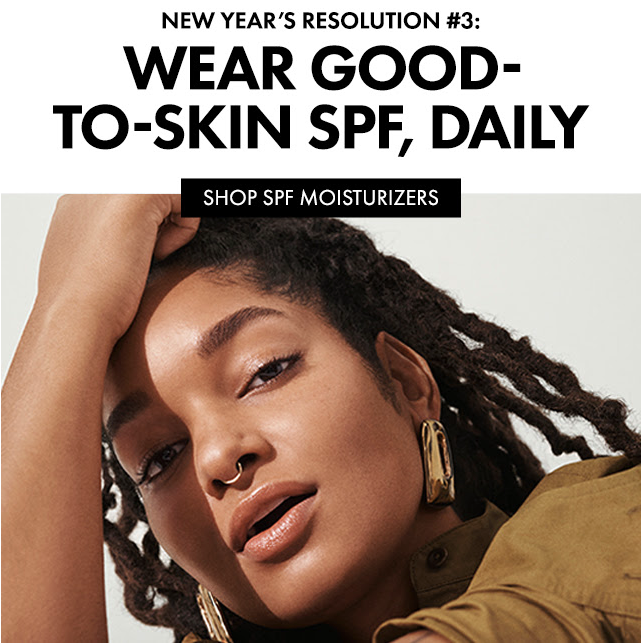 Of course, this email isn’t just about discussing good intentions; it has a hard commercial edge too.
Of course, this email isn’t just about discussing good intentions; it has a hard commercial edge too.
Below the fold, Origins lists some of its top SPF skincare products, each accompanied by a “Shop Now” CTA:
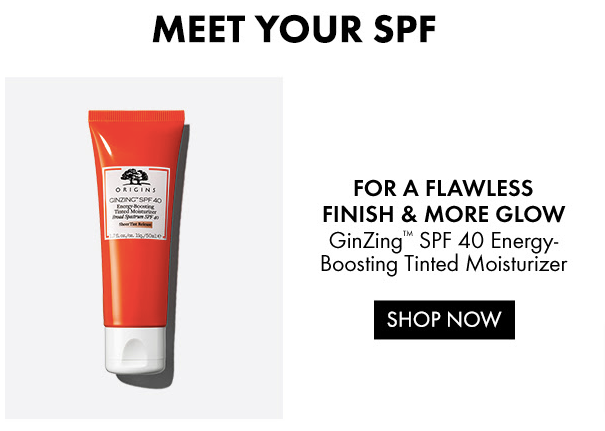 Incidentally, this is the third in a sequence of resolution-themed emails from Origins. If your products are especially goal-worthy, you could run this sort of campaign throughout the whole of January—and even check in with customers later in the year to ask how their resolutions are going.
Incidentally, this is the third in a sequence of resolution-themed emails from Origins. If your products are especially goal-worthy, you could run this sort of campaign throughout the whole of January—and even check in with customers later in the year to ask how their resolutions are going.
2. MYRO: Focus On Sustainability
Okay, sure; sustainability isn’t exactly a “new trend”. But it’s becoming ever-more important as an increasing number of consumers join the dots between the products they purchase and their own net impact on the world around them.
Our growing love for sustainable, eco-friendly products has largely been driven by younger generations, with three in four Gen-Zers saying sustainability is more important than brand name when making purchase decisions.
Where Gen Z leads, older generations are beginning to follow. Between 2019 and 2021, the desire among Gen X consumers to buy from sustainable brands rose by 24 percent, while their willingness to spend more on sustainable products climbed by 42 percent.
Today, two-thirds of all consumers say they’re happy to pay a sustainability premium when buying products—yet the same proportion of retail executives believe shoppers aren’t prepared to spend more.
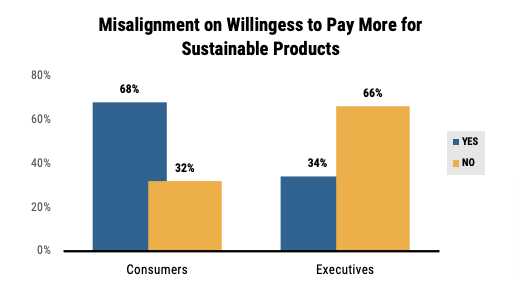 What do all those figures tell us?
What do all those figures tell us?
That sustainability is a massive deal to consumers; even more so than most retailers believe.
Sustainable brands are ideally placed to win new customers and generate more revenue—they just need to shout about it. And what better time than the New Year, when many shoppers are actively looking to change their behaviors?
Refillable bodycare brand MYRO is well aware of this. Sustainability is at the heart of its mission, with every product refill reducing waste from single-use plastic by at least 50 percent.
MYRO starts this New Year email marketing example with a strong subject line that underlines its eco-friendly credentials and speaks to consumers’ desire to live more sustainably:
![]() The email body continues in the same vein, urging shoppers to make eco-conscious changes by swapping to a refillable body wash. The message is clear: “This is a quick and simple way to help the planet.”
The email body continues in the same vein, urging shoppers to make eco-conscious changes by swapping to a refillable body wash. The message is clear: “This is a quick and simple way to help the planet.”
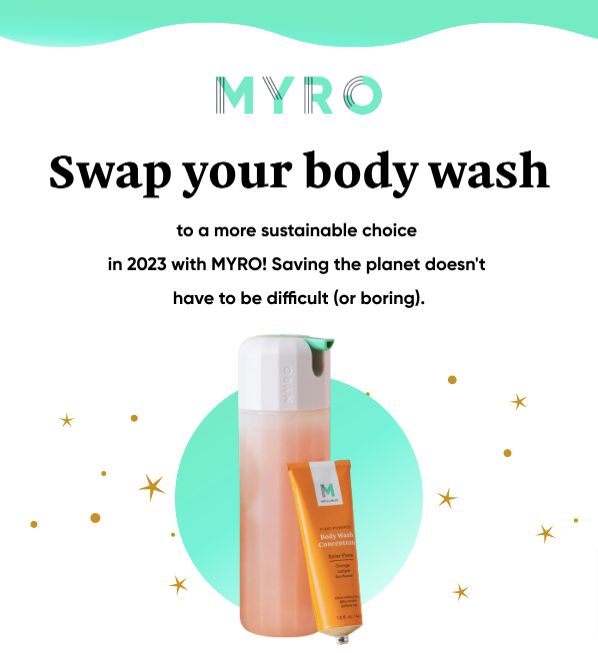 You might think that’s already a sufficiently persuasive argument, but MYRO goes one step further by offering a 15 percent discount code just above the call to action:
You might think that’s already a sufficiently persuasive argument, but MYRO goes one step further by offering a 15 percent discount code just above the call to action:
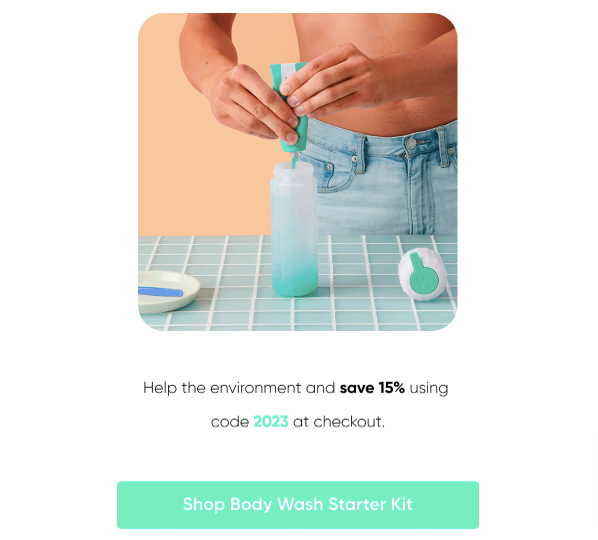 So customers get to benefit the environment and save money? That’s a pretty compelling hook.
So customers get to benefit the environment and save money? That’s a pretty compelling hook.
3. Frank & Oak: Drive Action With a Competition
I don’t want to be all doom and gloom, but I’ve got some more bad news about marketing in the New Year.
Turns out January isn’t just a bad time for retail sales; it’s also lousy for email marketers. January is in the bottom quartile for average email open rates by month, at 19.83 percent—almost 11 percent less than the highest month. And it also has the joint-highest email unsubscribe rate.
If you’re going to buck those trends, you need to incentivize your audience to engage with your messaging.
One of the best ways to do that is by running a giveaway, like sustainable fashion brand Frank & Oak did in my next New Year marketing example.
Well aware that consumers are less likely to open emails at this challenging time of year, Frank & Oak led with an email subject line that includes a single, clear instruction:
![]() Without saying so in as many words, this subject line suggests that there’s something in it for the customer. It’s actionable enough to catch the eye and sufficiently intriguing to win the click.
Without saying so in as many words, this subject line suggests that there’s something in it for the customer. It’s actionable enough to catch the eye and sufficiently intriguing to win the click.
Next, Frank & Oak gets to the meat and potatoes of its campaign: the opportunity to win a $1,000 gift card.
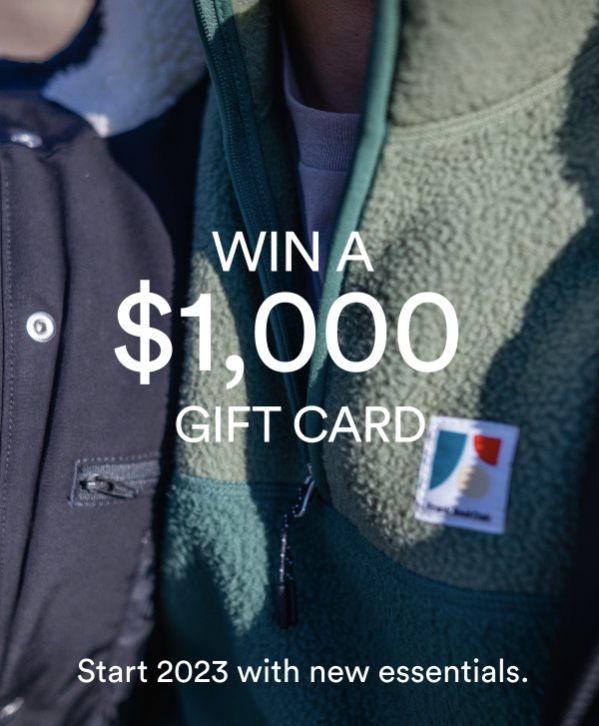 Of course, a competition like this isn’t an automatic guarantee of success.
Of course, a competition like this isn’t an automatic guarantee of success.
Simplicity is key when it comes to running an effective giveaway. Unless the prize is truly spectacular, most consumers aren’t prepared to jump through a bunch of hoops, so try to make the desired “action” as low-touch as possible.
In this case, Frank & Oak simply asked consumers to follow its Instagram account:
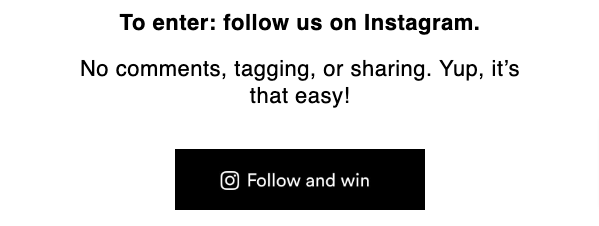 That’s right—no “like”, share, or comment. Just a tiny little follow in return for a potential $1,000 payday. Seems like Frank & Oak is getting the rough end of the deal here.
That’s right—no “like”, share, or comment. Just a tiny little follow in return for a potential $1,000 payday. Seems like Frank & Oak is getting the rough end of the deal here.
But in reality, there’s plenty of benefit to building your Instagram following. One study found that 72 percent of Instagram users have made fashion, beauty or style-related purchases after seeing a product on the social media platform, with the most-purchased categories named as:
- Clothing
- Makeup
- Shoes
- Jewelry
Plus, remember, Frank & Oak isn’t asking any old person for a follow. It’s specifically targeting people who subscribe to its marketing emails.
Presumably, this audience is already pretty engaged with the brand, meaning there’s a good chance they’ll keep following the Instagram account after the competition has finished.
One final point: Research from Shopify found that, on average, multichannel marketing increases revenue by 38 percent, 120 percent, and 190 percent for each additional channel a customer engages with. So it’s clearly in your interests to point email subscribers toward your other marketing channels.
4. Flamingo Candles: Add Customer Testimonials
I think I’ve made it pretty clear that you need to work pretty hard to prise open your customers’ purse strings in the New Year. In fact, 39 percent of Americans said their New Year’s resolution for 2023 is to save more money.
Essentially, it’s your job to convince them that saving money is great—but buying your product is better.
Doing that requires more than just some snappy copywriting and jazzy product imagery.
Turns out consumers are actually far more likely to listen to fellow customers than brand marketers. Indeed, 72 percent find customer reviews and testimonials more credible than the things brands say about themselves, according to research from Tint.
In my next example, Flamingo Candles leads with some simple New Year-themed messaging, urging subscribers to check out its range of slogan keytags:
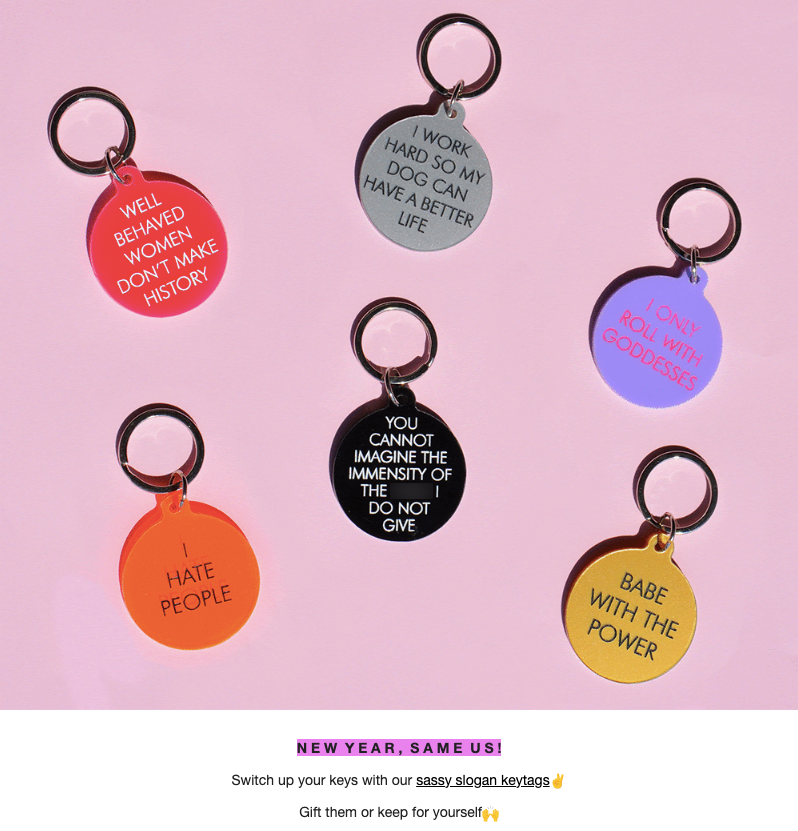
That’s a solid if unspectacular opening gambit—not strong enough for me to include in a roundup of inspirational New Year marketing ideas.
What elevates this email is the below-the-fold section, where Flamingo Candles includes a bunch of real-world customer testimonials:
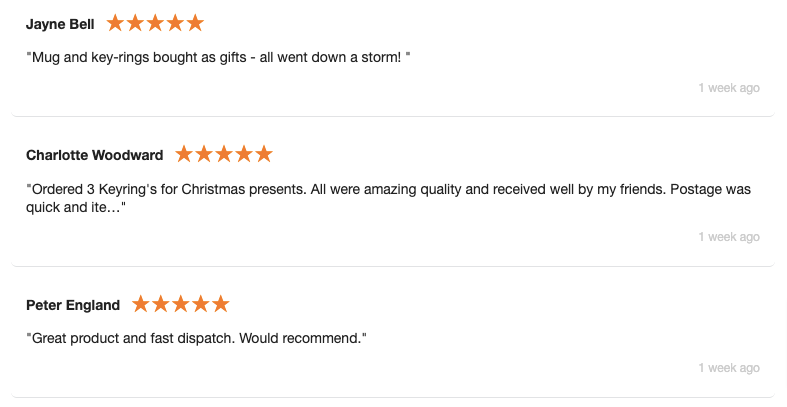
Best of all, these aren’t just generic reviews about how much people love Flamingo; they’re specifically tailored to the product category in the email.
5. Paperchase: Boost AOV With Product Bundling
We know consumers are less inclined to open marketing emails in January than in most other months.
It stands to reason, therefore, that you’re also likely to generate fewer email click-throughs to your website.
This places a higher-than-average premium on those customers who do open—and click through from—your emails, with messaging geared toward driving the highest-possible average order value (AOV).
Product bundling is one solution.
According to McKinsey, 35 percent of purchases on Amazon stem from the retail giant’s product recommendation algorithms. And a lot of those recommendations involve some form of bundling.
Fortunately, product bundling doesn’t just apply to the gigantic megacorporations. Brands of any size can use this strategy to drive conversions and boost AOV.
Stationery retailer Paperchase placed bundling front and center in this New Year marketing example:
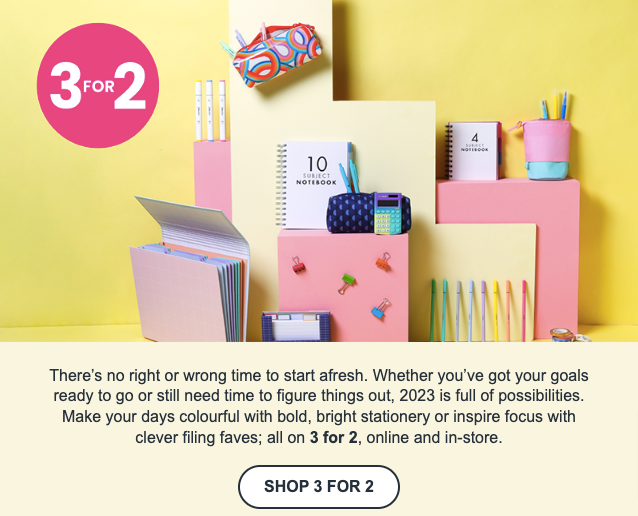 This is a tactic known as mixed bundling, in which the bundled products can be bought separately.
This is a tactic known as mixed bundling, in which the bundled products can be bought separately.
Typically, customers can build their own mix-and-match bundles from a wide array of products, giving them greater control over the products they choose. It’s essentially the opposite of pure bundling, whereby the products in a bundle can’t be purchased individually.
Mixed bundling appears to be more attractive to consumers than pure bundling, with researchers at Harvard Business School and Carnegie Mellon University revealing that a switch from mixed to pure bundling could reduce sales by over 20 percent.
Evidently, shoppers prefer the flexibility of a mixed bundle, making it an effective strategy for maximizing revenue in your New Year marketing.
New Year, New Email Marketing: Try Drip
The New Year is the perfect time to try something new.
So why not take the opportunity to test-drive our revenue-driving email marketing tools?
Drip gives you the power to stand out amid a crowded inbox by helping you craft dynamically personalized messaging.
Want to offer customers a special discount on their birthday? Give targeted product recommendations based on previous browsing activity? Reach out to cart abandoners with reminder emails? Do it all—and much more besides—with Drip.
See for yourself by signing up for your 14-day free trial.

